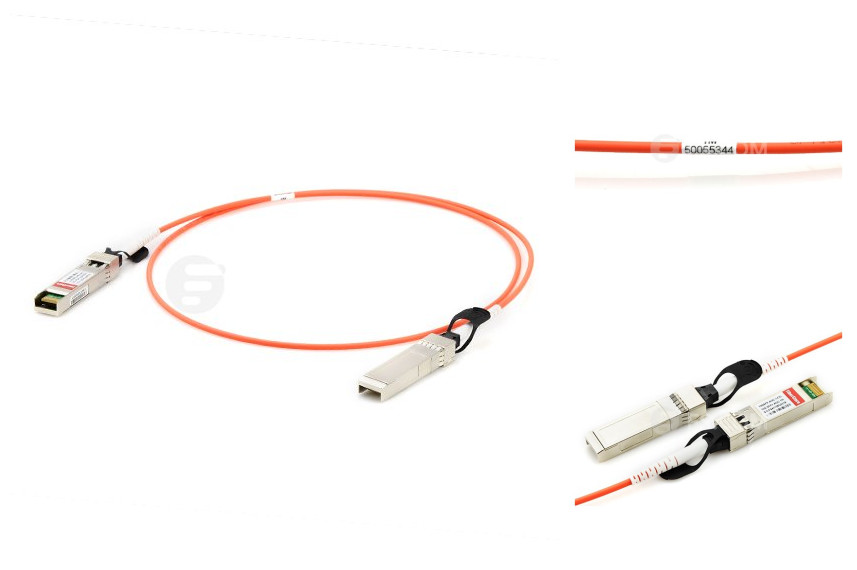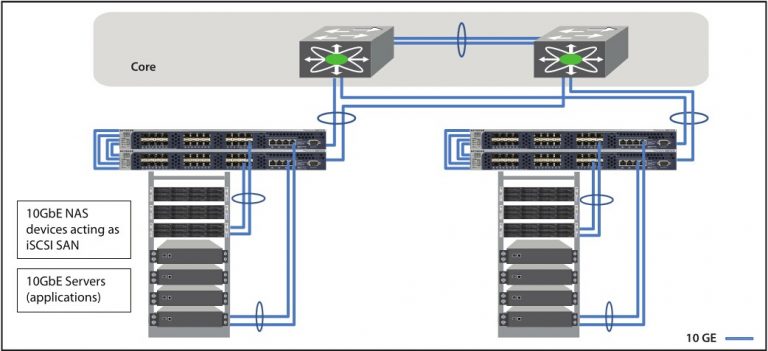July 17, 2016
Nowadays, 10 Gigabit Ethernet network has been very popular and been employed by large amount of enterprises in their corporate backbones, data centers, and server farms to support high-bandwidth applications. To achieve a reliable and cost-effective 10 Gigabit Ethernet network, here are several factors that you should take into consideration for the deployment.
Direct-attached storage, network attached storage and SAN are three types of storage in a network. Among them, SAN is the most flexible and scalable solution for data center and high-density applications. But SAN costs much and needs special training for the installation and maintainance of the Fibre Channel interconnect fabric. The internet small computer system interface (iSCSI), which allows 10GbE infrastructure to be used as a SAN fabric, makes 10 GbE an attractive interconnect fabric for SAN applications. Compared with Fibre Channel, 10GbE infrastructure is more favorable because it can reduce equipment and management costs, enhance server management, improve disaster recovery and deliver excellent performance.
Many organizations try to optimize their data centers by seeking server virtualization, which can support several applications and operating systems on a single server by defining multiple virtual machines on the server. And this can help organizations to reduce server inventory, better utilize servers, and mange resources more efficiently. Server virtualization relies heavily on networking and storage. Virtual machines require lot of storage. The network connectivity between servers and storage must be fast enough to avoid bottlenecks. 10GbE can provide fast connectivity for virtualized environments.
Today, traffic at the edge of the network has increased dramatically. Gigabit Ethernet to the desktop has become more popular. Many people adopt Gigabit Ethernet to the desktop, increasing the oversubscription ratios of the rest of the network, which brings the bottleneck between large amounts of Gigabit traffic at the edge of the network and the aggregation layer or core. 10 GbE allows the aggregation layer to scale to meet the increasing demands of users and applications. It can well solve the bottleneck for its three advantages: 10 GbE link uses fewer fiber stands compared with Gigabit Ethernet aggregation, 10 GbE can support multi-gigabit streams and 10 GbE provides greater scalability, bringing a future-proof network.
To accomplish 10 GbE network deployment, three important factors should be considered, the type of fiber cable (MMF of MF), the type of 10 GbE physical interface and optics module (XENPAK, X2, XFP and SFP+). Form factor options are interoperable when 10 GbE physical interface type is the same on both ends of the fiber link. For example, 10GBASE-SR XFP on the left can be linked with one 10GBASE-SR SFP+ on the right. But 10GBASE-SR SFP+ can't connect to one 10GBASE-LRM SFP+ at the other end of the link. And 10G SFP+ active optical cable, such as Cisco SFP-10G-AOC3M SFP+ active optical cable (as shown below) and Cisco SFP+ active optical cable, SFP-10G-AOC10M, is also a good choice.

Other than fiber optic cabling solutions, there are also copper cabling solutions for 10GbE. Copper cabling solutions are suitable for short distance connections. There are three copper cabling solutions: 10GBASE-CX4, SFP+ direct attach copper cable and 10GBASE-T.
10GBASE-CX4 is the first 10 GbE standard. It's economical and it allows very low latency, but it's a too large form factor for high density port counts in aggregation switches. 10G SFP+ direct attach copper cable (10g copper SFP) is a popular copper solution for 10 Gigabit Ethernet, which has become the main choice for servers and storage devices in a rack for its low latency, small connector and reasonable cost. 10GBASE-T runs 10 GbE over Cat6a and Cat7 up to 100 m.
A top-of-rack (ToR) switch is a switch with a low number of ports that sits at the very top or in the middle of a 19" telco rack in data centers. A ToR switch provides a simple and low-cost way to easily add more capacity to a network. It connects several servers and other network components together in a single rack. ToR switch uses SFP+ to provide 10G network in an efficient 1U form factor. Each server and network storage device can be directly connected to the ToR switch, eliminating the need for intermediate patch panels. And the cabling outside the rack, the ToR switch uplink connection to the aggregation layer, simplifies moving racks. The figure below shows a 10GbE ToR switching solution for servers and network storage. Because the servers are virtualized, so the active-active server team can be distributed across two stacked witches, which can ensure physical redundancy for the servers while connected to the same logical switch. What's more, failover protection can be offered if one physical link goes down.

10 Gigabit Ethernet network is not the fastest solution, but it is quite enough for common applications in our daily life. For a better and successful 10 Gigabit Ethernet network deployment, you need to take all those factors mentioned above into consideration. And it can also help you make better options about fiber or copper cabling solutions for your 10G networks.
Posted by: jowang at
03:22 AM
| No Comments
| Add Comment
Post contains 866 words, total size 7 kb.
35 queries taking 0.0497 seconds, 70 records returned.
Powered by Minx 1.1.6c-pink.









